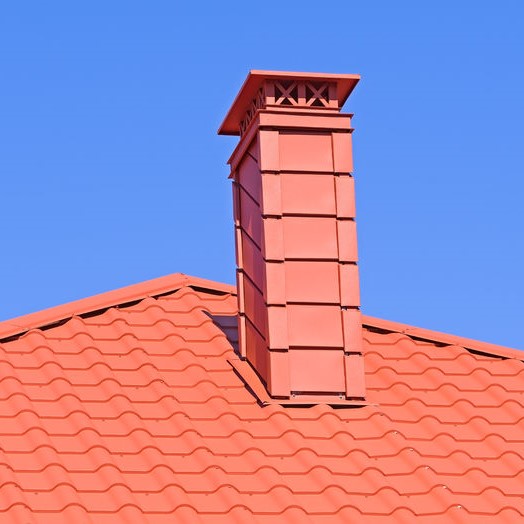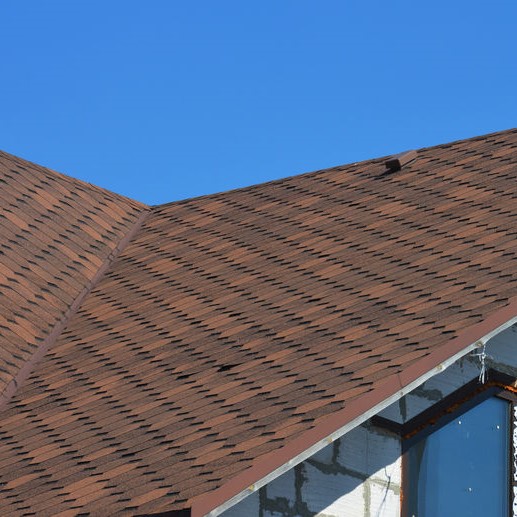
Is roof flashing necessary?
The roofing shingles are important, but without roof flashing, those shingles are almost worthless. Now, before you get excited about what you paid for that new roof, read on to see roof flashing explained.
Roof flashing is the thin metal strips you see around the chimney, valleys, and vents. Flashing a roof is the process of installing a waterproof material in roof valleys, at the roof joints, along the roof edges, and any roof penetration or other gaps.
Yes, roof flashing is necessary because roof flashing prevents roof leaks and water damage. Roof flashing is a form of protection and has become a standard construction practice for commercial, industrial, and residential structures.
Without roof flashing, the rain and snow would get under the shingles in those areas and on to the decking, the attic, and well, you can see where this going, right? So a roof with flashing is as essential as the roofing shingles themselves.
What are the different types of roof flashing?
Today’s roof flashing comes in a wide variety of materials that are affordable and effective in doing the job it needs to do. Prior to the variety of manufactured roof flashing products, builders and carpenters would find creative ways to keep water from penetrating through the roof. One way was to construct staggered steps on the chimney back and sides. Another method was to install birch bark where you see the typical metal roof flashing used today.
While roof flashing is the less popular component of a roof, it is equally important as the roofing material, whether you choose asphalt, ceramic tile, metal, wood shingles, or any other type of roofing material. Fortunately, you can choose from a variety of roof flashing material that will blend in with the roofing material and match your home’s architectural exterior. The four most popular roof flashing materials are:
- Galvanized Steel: This roof flashing is usually paired with metal roofing, a natural choice that matches the metal roofing system. The galvanized steel roof flashing has a zinc coating that keeps it is less susceptible from corrosion and moisture.
- Aluminum: This roof flashing is a durable, flexible, and inexpensive materials compared to other roof flashing materials. Because it is flexibility, it is easily fabricated to fit around those hard-to-fit areas like the chimney, roof valleys, and base flashing. It is recommended apply a finish to aluminum roof flashing to fight off corrosion should it have any contact with cement, concrete, or wood. Only choose this roof flashing when working with professional roofing contractor that is experienced in working with this material to ensure you won’t have an issue with roof flashing is leaking. .
- Copper: Nobody can deny that cooper is an eye-catching material no matter where it used. The green patina it gets when exposed to the elements just adds the beauty of your home’s architectural style.
- Lead: Lead is a durable roof flashing material and one of the oldest ones around. It is a soft material that makes it flexible to work with those hard-to-fit areas yet is strong protector against water and temperature changes. It has an expected lifespan of 200 years or more.
How do you flash a roof, does roof flashing go under shingles?
It depends on what part of the roof you’re install the roof flashing. A headwall is the level intersection where the roof meets a wall. The roof flashing at this point should be installed extending up behind the exterior wall and over the roofing material. Some builders for aesthetics, will add a layer of shingles over the headwall roof flashing so that it blends with the rest of the roof.
Then there is the sidewall is an intersection between a wall and a sloping roof portion. The vertical portion of the sidewall roof flashing should be installed extending up behind the exterior wall covering, with the exception of brick walls. Then there is step roof flashing, short pieces of roof flashing that installed alternating and overlapping the roof shingles.
Roof flashing is installed with an adhesive using a caulking gun, applying a generous amount along the back of the roof flashing. Repositioning the roof flashing, aligning the cuts at the lower edge, and pressing into place.

How do you seal roof flashing?
To seal roof flashing, you will find masonry caulk that is designed just for roof flashing. It is applied at the roof flashing and chimney joints and is used to seal the seam between the chimney cap and step flashing. You can also use a silicone caulking compound or urethane roofing cement to seal around the chimney cap and step flashing.
When you have a roof leak, it isn’t always through the shingles. A leak could be the roof or flashing, where the flashing as came loose, is missing, or wasn’t installed right with proper sealing. Any time you have a roof leak, it is recommended to have professional roofing contractor inspect your roof. If it is nothing more than loose flashing, many contractor will reattach it at no charge. Call (877) 406-7663 today.


